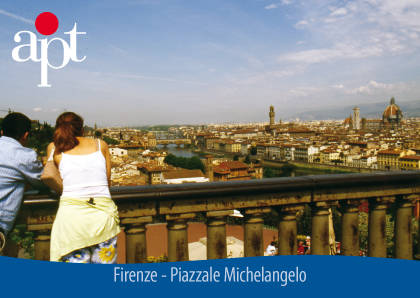Florence's Renaissance: Part 2
The Cambridge professor W.R. Inge once remarked that “the nations which have put mankind and posterity in their debt have been small states: Israel, Athens, Florence, Elizabethan England.” Indeed there is some small debt, or at least homage, to be paid to Florence for its contributions—it gave us the Renaissance, a blueprint for modern banking, the Italian language. It is difficult for a city of such copious historic accomplishments not to simply rest on its laurels, to offer its visitors something that piques interest anew and to become once again, in some measure, the voice of Italian progress. But leaders of Florentine institutions attempted to do just that when they gathered at New York’s Italian Cultural Institute this past week to reveal upcoming and ongoing initiatives, a presentation they called “Florence: A New Renaissance”.
Nicoletta Maraschio, the Director of the Accademia della Crusca (a leading establishment for research and promotion of Italian based, appropriately enough, in Florence), placed much-needed emphasis on the importance of the Italian language. She stirred the audience’s collective sentiment when she called for greater efforts to “invest in the knowledge of Italian”, as is done across Europe with German, Spanish, and of course, English. Her dose of hard reality, a reminder that Italy is not meeting the high demand for Italian in the world, not allocating enough resources to that end, prompted some listeners to yell “brava!”. Among some of her most interesting proposals to put Florence, and Italian, back on the map was “Lingue in piazza” (“Languages in the Piazza”), an open-air event for the exchange of world languages, with readings and discussions between academics. The Italian Cultural Institute’s director, Renato Miracco, would echo her concerns, saying we had to find “new ways of discovering and teaching Italian”.
Florence’s major cultural venues are also revamping their image with exhibits that offer fresh perspectives on age-old themes. The Palazzo Strozzi Foundation is putting on a show entitled “Women in Power: Caterina and Maria de’Medici”, while the Maggio Musicale Fiorentino Theater (Florence’s opera house) opens every season with a progressive theme—last year’s was “Rebel Women”, this year’s is “The Dark Side”. Paolo Caretti, Vice President of the Maggio Musicale Foundation, was present to announce his institute’s program, including the world premiere of a new opera by Matteo D’Amico called “Patto di sangue”.
A few of the conference’s most unexpected guests were American sculptor Greg Wyatt, who has had a long-standing relationship with Florence and whose work will be shown there again in 2009, and a couple of his Italian students. Wyatt (his magnificent sculpture is prominently displayed outside the Cathedral of St. John the Divine, where he is also sculptor-in-residence) has spearheaded an exchange program out of Florence for distinguished art students, both from the U.S. and Italy. A beneficiary of this relatively new and fruitful exchange was Wyatt’s young Florentine student, who called his experience in the U.S. “awesome”, and gave a spirited shout-out to one of his professors.
And further illustrating that Florence's gifted contemporary artists can also be experienced from here, it was announced that the National Arts Club in Gramercy Park has an exhibition of Antonio Lo Pinto underway (Ocotber 5th-17th). The Catania-born sculptor, who has transitioned from minimalism to his own avant-garde styles, studied at l’Accademia di Belle Arti di Firenze and is a professor at l’Istituto d’Arte di Porta Romana in Florence.
The “New Renaissance” speakers were brought together by Dario Nardella, President of the Commission of Cultural Affairs. He began his speech by expressing pride and joy in the interest Americans have shown for Florence—it is in point of fact the Italian destination American tourists visit most. Implicit in his words was the hope that this conference would prove that his city was still one of innovation, still capable of sparking intellectual debate, producing great art, and of inspiring those who pass through it.


































i-Italy
Facebook
Google+
This work may not be reproduced, in whole or in part, without prior written permission.
Questo lavoro non può essere riprodotto, in tutto o in parte, senza permesso scritto.